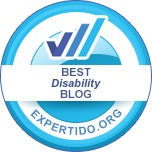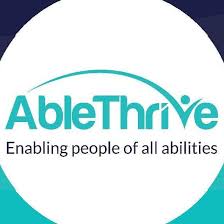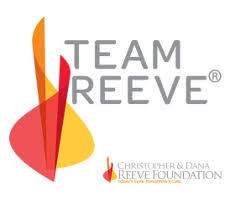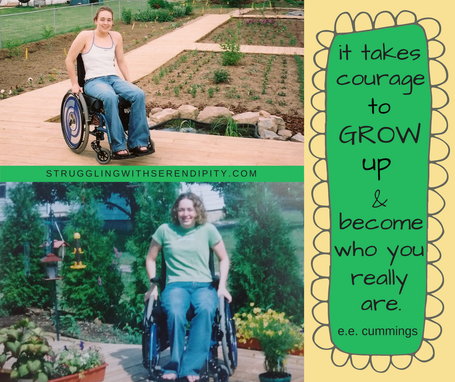 (This blog tells my family's story. To see more, click "blog" at the top of this webpage.) The sunshine of a new spring, along with my once-a-week counseling sessions, kept my well of worry from overflowing. Nearly three years post-injury, Beth showed me that her life with quadriplegia could be so much more than I had imagined at first. My anxiety dropped from a scary level to something more manageable. Chronic head pain remained a challenge. My obsession with worst-case scenarios improved from hourly to only some days. Most teenagers felt invulnerable and didn't worry about risks. That group included my youngest, despite her disability. We lived a few blocks from the high school and Beth liked the idea of wheeling there instead of driving with me. My first thought: NO! How could it be safe for her to cross alleys and streets in a wheelchair? Beth wanted to try. On a weekend, I walked next to her on a trek to the high school. The first obstacle involved wheeling over driveway stones to get to the sidewalk in front of our house. Next, the old neighborhood had broken sidewalks and no curb cuts. We tried a narrow alley instead that had bumps and stones and potholes. And almost zero visibility for cars with bushes blocking the view. When we crossed Tiffin’s Washington Street in between parked cars, drivers approached fast. On the high school grounds, there was no way to avoid either a long incline at the front entrance or a harder slope into the parking lot towards the automatic doors. I continued to drive her to and from school. The Quiz Bowl team finished a winning season, undefeated in the league. Against my advice, again, Beth joined the high school spring musical, Hello Dolly. She wore a headset to manage the stage crew while Maria shined in the lead role. After a show, I conversed with friends in the lobby without making a quick excuse to leave. The girls stayed out late at cast parties that followed the show's success. John and I dropped our strict curfew rule after the car accident. A spinal cord injury had changed our perspective, with a new awareness of what really mattered. And what didn't. Beth wasn’t happy with her ACT score for college, so she studied practice books before taking the test again. Not my idea. The second ACT improved on her first composite score by a surprising four points; she credited her English teacher, Mrs. Kizer, for her high English score. Beth set goals on her own and I supported her unconditionally, but not for bragging rights. More than anything else, I needed her to be okay, to be really okay, as she claimed the night of the accident. Was it too much to wish the same for myself, for everyone I loved, and for the rest of the world? Flowers burst into bloom in John's big garden with the ramped walkways. I loved the sunshine. Keeping up with Beth kept me busy and distracted most days, especially when my headache settled at a lower baseline. Lots of comings and goings. School, after-school activities, volunteering, swim practices, and time with friends. Sometimes I drove while Beth, often tired, dozed in the passenger seat. Overbooking her time shifted from a frequent inclination to an ingrained habit. She didn’t want to miss out on anything. Next week: Beth’s first swim competition with the forward freestyle!
2 Comments
 (This blog tells my family's story. To see more, click "blog" at the top of this webpage.) Beth had another sleepover on New Year’s Eve with her best friends and a fondue feast at our house. Soon after, Dr. Miller asked Beth if she would exchange emails with a new quad, and I talked to an overwhelmed mom on the phone. I listened but shared little, only how everything had changed in comparison to the initial month and how I hoped for more progress. I was sure that I wasn't a good role model for other parents. The New Year and the time beyond seemed impossibly uncertain. My concerns encompassed the global and the trivial. I was an equal opportunity worrier. Since 9/11, terrorism and nuclear weapons found their way into my nightmares. Any number of potential health problems threatened Beth—and everyone I loved. When she ventured out into the world as an adult, what kind of welcome would she find as a quad? As a toddler, she was Cinderella to Maria's Snow White. Would they find their happily ever afters? At a meeting in Toledo, Beth registered for the wheelchair games in May with the Raptors. She thought that she wasn’t good enough to sign up for the pool events, but others convinced her to try. Some of her friends also shared their earlier trips to another sports event, the National Junior Disability Championships, held every summer for kids from across the country. In February, Beth elected to have an eight-hour bladder surgery, paving the way for independence. As a result, I would no longer need to be with her every few hours. A week after she left the hospital, against my advice, she agreed to help Laraine with a new class of physical therapy students. Beth wore loose clothes to cover the temporary tubes from the surgery that protruded from her abdomen along with a small rubber bulb. Laraine teased about going easy on her during the mat exercises. When Beth sat with her hands in her lap, she wobbled less than she had at the last demonstration. Careful with the tubes, Laraine refrained from pushing hard to test her balance. Beth also shared her ponytail progress with the students, but she still couldn't complete an additional loop of the elastic to keep it in place. Not yet. At the followup appointment with the urologist, he removed all the tubes and the bulb for good, leaving bare skin and a long surgery scar below her belly button. We celebrated with a shopping trip. She had fun picking out cute underwear and a bikini swimsuit. Beth was disappointed with the doctor’s ban on swimming for six more weeks as she healed from the major surgery, not negotiable. And her first swim meet ever was just ahead. 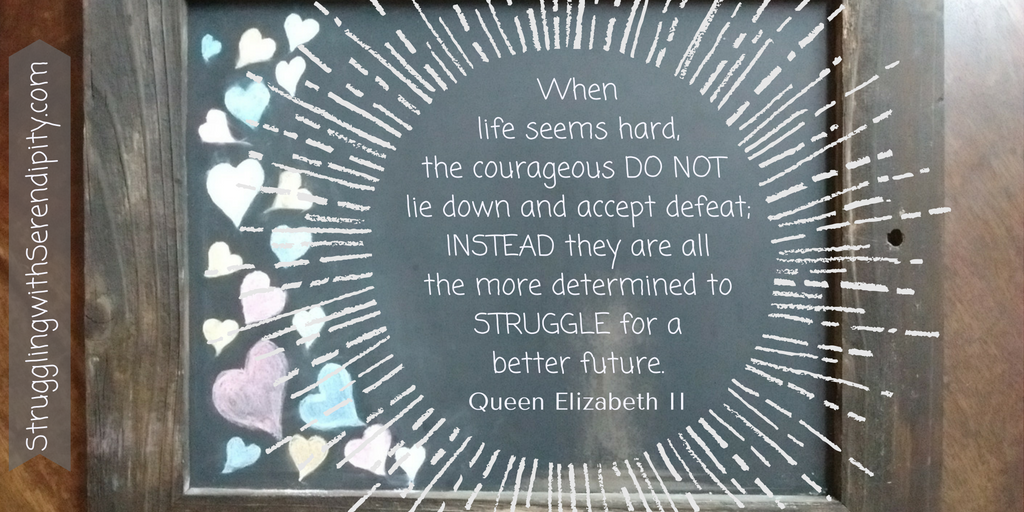 (This blog tells my family's story. To see more, click "blog" at the top of this webpage.) On the advice of the social worker at Green Springs, Beth and I met with a Rehabilitation Services counselor. He asked about a career. Fifteen years old, she responded that she might be a rehab doctor like Dr. Miller. Surprised, the counselor chose his words carefully and voiced objections. He doubted her physical abilities, but to be fair, he didn’t know how persistent she could be in finding ways to use her hands for fine motor tasks. Beth didn’t like being told she couldn’t do something. With the exception of standing and walking and jumping, she regarded most physical obstacles as surmountable in some way. She asked for my opinion. I shared my certainty that she could be a great doctor—after proving herself every step of the way in the face of resistance from those who would see the wheelchair first. A computer expert set Beth’s mouse to respond to the soft touch of her thumb and added DragonSpeak software. The early version required time to teach the program to recognize your individual voice. Getting comfortable with typing, she gave up on DragonSpeak. Learning how to drive peaked her interest much more. The rehab counselor guided us through the steps after Beth passed the written test for her learner’s permit. A specialized instructor from Toledo recommended specific car modifications. Driving would not be a problem. The biggest issues: getting in and out the car independently, plus storing the wheelchair. A van with a lift would easily solve those issues, but instead, Beth bought a little blue Ford Focus hatchback with insurance money from the accident. Toledo mechanics added all of the modifications. Sitting in the driver’s seat, Beth used her right hand to grip a large knob attached to an easy-to-turn steering wheel. Her other hand pushed or pulled a bar on the left side of the steering wheel to apply the brakes or to go faster. The gas and brake pedals on the floor also worked (after testing that her spasms would not be likely to hit the pedals), so I could drive it the usual way. To top it off, a big motorized box on the roof lifted and stored a folding wheelchair, the control box in the driver’s reach. “My newest challenges are learning how to drive a car with adapted hand controls,” she said, “and how to transfer in and out of the driver’s seat independently.” To go anywhere in the car by herself, Beth had to open the door to the driver’s seat, remove the foot rests, position the wheelchair, lock it, place the sliding board to bridge the gap to the car, slowly shift over, put away the sliding board, grab the remote control, release the hook from the top, take off the chair cushion, fold the wheelchair, catch the folded seat with the hook, and push the toggle to lift and store the chair. With anything less than perfection, the car would not start and Beth could not fix it. So...we rarely used the topper. I flattened one of the back seats so I could set the chair into the hatchback without folding it or taking the wheels off: one small simplification in days that felt complicated. We didn't know that Beth's little blue car would carry us far and wide, to adventures that were completely unexpected.  (This blog tells my family's story. To see more, click "blog" at the top of this webpage.) Approaching the 12-month anniversary of her spinal cord injury, Beth participated in her first seminar for Laraine’s physical therapy students in Toledo. “Beth’s insights and down to earth presentations enlighten students and motivate them to challenge the spinal cord injury patients in their care,” Laraine said. The patient panel included a young married quad who showed the students her intricate embroidery while her adorable toddler played nearby. Another quad, an older man, seemed annoyed when his leg straightened suddenly. He broke the spasm by leaning forward and patiently pressing a fisted hand at the back of the knee on the same leg, a process my daughter would practice and duplicate countless times. “I was one of a few panelists who shared our experiences and answered many questions,” Beth said. “I also participated in the ‘hands on’ part with Laraine showing specific techniques. Then the seminar participants tried the exercises with me while we talked. I hope it helped them understand a patient’s perspective a little better, and also to see that a quadriplegic can do more than is usually expected.” Laraine asked Beth to start the physical therapy routine, to transfer out of her wheelchair with help, to lift an inert leg onto the mat table with a now-stronger arm, and sit up slowly on her own. As she sat in the long-sitting position with her hands in her lap, Laraine gently pushed and prodded her trunk. Beth stayed upright most of the time, winning the battle. The students clapped. To finish the demonstration, Beth wobbled through the steps of the ending routine independently. She tied the laces of her shoes and used her teeth to do the final tightening. It would take more persistent trial and error to complete the task without using her teeth. Laraine asked her to share the progress with her ongoing ponytail quest. Beth scooted forward in her chair and then leaned back to anchor herself for better balance. Her right wrist lifted the hair up from the nape of her neck. She put a standard elastic band around her left index finger and left thumb. With effort, she used her head as an anchor for her hand to move the hair through the elastic band. Unfortunately, it wasn’t tight enough. She kept trying to loop the band around a second time to hold the ponytail in place, determined to do it on her own. Another year would pass before Beth achieved her goal of a perfect messy ponytail. Curious how she does it? Here are two of her videos: www.ablethrive.com/basics/putting-hair-up-in-a-ponytail ...And one that includes tying shoes: www.youtube.com/watch?v=6HT-yjaeCJU  (This blog tells my family's story. To see more, click "blog" at the top of this webpage.) Mid-summer at the rehab hospital, Beth gradually felt small sensations in her trunk and legs. The therapists called it a “return” that sometimes occurred after the shock of the initial trauma abated. She could feel a firm touch on the skin, but not hot or cold or any degree of temperature. Beth’s spinal cord had been cut at C6-7, but the new sensations proved that a tiny strand remained connected, defining her injury as incomplete. When we sat outside between therapy sessions, she could not feel the warmth of the sun on her legs. “I have regained only partial feeling in my trunk and legs, but still no movement,” Beth said. “I can move one finger on my left hand and my handgrip is still weak.” Zero finger control in intensive care changed to one digit, the left index, which could move a little. Limited to a range of three inches, the finger could not straighten or touch her palm. Even so, it was a gift, one that would make her left hand the favored one for everything except her right-handed habit of writing. I hoped for more returns which never happened. Simple tasks remained complicated or unworkable. The inability to put her hair up in a ponytail bothered Beth. She couldn’t manipulate an elastic band, but there was a second big obstacle. If she raised her hands high as she sat in a chair, she tipped forward to the floor. Beth depended on the wheelchair armrests to balance. Laraine taught her how to push down with her palms on the locked big wheels to shift and move her bottom, little by little, to the front edge of the chair seat. Then, Beth leaned against the backrest for stability to prevent a tumble to the floor when she lifted her hands behind her head. Before she handed me the elastic band, she tried to put her hair up on her own, again and again, until her arms trembled. “Early on,” Beth said, “I decided that I was going to become completely independent no matter how long it took.” 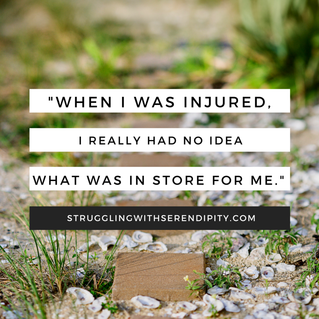 (This blog tells my family's story. To see more, click "blog" at the top of this webpage.) Occupational therapy at the hospital focused on Beth's hands. We learned about the tenodesis reflex which some quadriplegics used to grip items, though it required persistent practice to use it well. I tested the reflex. I set an elbow on a table with my forearm straight up and my hand falling forward. Keeping my fingers loose, I pulled my hand backwards at the wrist. As my hand tilted back, the tenodesis reflex automatically closed the space between my fingers and palm. Sitting in a wheelchair at a table, my youngest was determined to manipulate objects with her hands. To grip a pen with a fat handle, she held it between her index and middle fingers by tilting her right wrist forward and up, her hand entirely closed. At first, she couldn’t press the pen down enough for the ink to show. Beth also observed and listened. We heard about the 1995 accident that left actor Christopher Reeve immobile and dependent on a breathing tube. His spinal cord injury occurred one inch higher in the neck than Beth’s and required nursing care around the clock. I tried to be grateful for my daughter’s ability to breathe independently and move her arms, but I wanted so much more for her. We met others with spinal cord injuries at rehab. One had a brain injury in addition to a bruised cord. A middle-aged man with an injury like Beth’s had lived his life in a nursing home. A newly-injured young man with paraplegia (paralysis in two limbs, the legs) refused physical therapy and moved to a nursing home. He had full use of his hands and arms. When another boy was paralyzed during fusion surgery to correct his scoliosis, his mom told me that he would not get out of bed for weeks. Then, he would not go back to school. “I learned how some people given the same situations react in opposite ways. I have seen how people take so much for granted,” Beth said as a 14 year old. “Some people had a tendency to stop. They wouldn’t try to be independent. That’s always been a goal of mine—to be independent.” Beth’s outlook stayed hopeful, but in a vague, trusting way. She had no idea where our future adventures would take us. |
Cindy KolbeSign up for my Just Keep Swimming Newsletter by typing your email address in the box. Thanks!Categories
All
Archives
November 2022
|

 RSS Feed
RSS Feed
